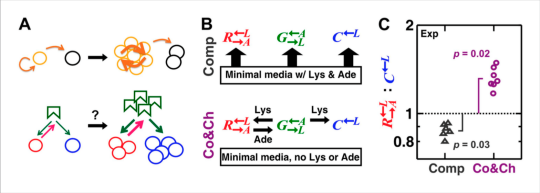Research
The department has committed itself to providing fully equipped labs that support a diverse range of research. The Research Labs supporting the Molecular and Cellular Graduate Program focus on Cell & Developmental Biology, Computational Biology, and Microbiology & Infectious Disease. Biology department researchers have access to state of the art Core Laboratories with instrumentation for imaging facility, flow cytometry, animal facilities, and computational resources. For more information on research facilities at the BC Biology department please visit the Core Laboratory Facilities page.
Research Specialties

Our department explores a range of areas within cell and developmental biology. Please see below for details.
Maitreyi Das, Ph.D.
Broad interdisciplinary approaches in cell and molecular biology and genetics, quantitative live-cell imaging, predictive models of regulatory mechanisms
Eric Folker, Ph.D.
Cellular Organization. Mechanisms of nuclear movement and the role of nuclear movement in muscle development and disease pathogenesis.
Juan Manuel Gonzalez-Rosa, Ph.D.
Heart development and regeneration; zebrafish genetics; role of fibrosis, inflammation, and polyploidy in regeneration.
Marc-Jan Gubbels, Ph.D.
Host cell invasion is at the heart of apicomplexan parasite pathogenesis. We use Toxoplasma gondii as a genetically tractable model to dissect this process. In addition we are analyzing the internal budding of daughter parasites during T. gondii cell division. Identification of key players in processes unique to the biology of Apicomplexa (invasion and division) is the first step towards development of more effective therapeutic options.
Vicki Losick, Ph.D.
Role and regulation of polyploidy in wound repair, aging, and disease in Drosophila
Sarah McMenamin, Ph.D.
Zebra fish, post-embryonic coordination, thyroid hormone, craniofacial development; Ecology and Evolution
Thomas Seyfried, Ph.D.
Gene-environmental interactions in epilepsy and brain cancer
Ken Williams, Ph.D.
Central nervous system macrophages, neuroAIDS, AIDS pathogenesis, monocyte/macrophage biology

Figure of a spatial environment favoring heterotypic cooperation over cheating, taken from "Spatial self-organization favors heterotypic cooperation over cheating" by Dr. Babak Momeni
Computational Biology, a multidisciplinary research field that integrates Mathematics and Biology, is driven by newly emergent technologies. Areas of concentration at Boston College include genetics/genomics, systems biology, synthetic biology, and RNA structure/function.
Michelle Meyer, Ph.D.
Computational biology, non-coding RNA discovery and validation, molecular evolution, RNA and protein structure.
Babak Momeni, Ph.D.
Systems biology of microbial communities; mathematical modeling of biological systems; microbial ecology.

Image Credit: Williams Lab - SIV-infected macrophages comprise lesions in the frontal cortex of an SIV-infected rhesus macaque that developed AIDS with SIV-associated encephalitis.
Work in Microbiology and Infectious Disease in the department spans a variety of experimental systems, including virus-host interactions, bacterial genetics and microbial systems, cellular parasitology and fungal genetics.
Emrah Altindis, Ph.D.
Understanding microbial mimicry in host-pathogen interactions, characterization of viral insulins in Iridoviridae, identification of novel viral hormones, exploring the role of the microbiome in Type 1 Diabetes autoimmunity
Marc-Jan Gubbels, Ph.D.
Host cell invasion is at the heart of apicomplexan parasite pathogenesis. We use Toxoplasma gondii as a genetically tractable model to dissect this process. In addition we are analyzing the internal budding of daughter parasites during T. gondii cell division. Identification of key players in processes unique to the biology of Apicomplexa (invasion and division) is the first step towards development of more effective therapeutic options.
Zoë Hilbert, Ph.D.
Evolutionary infection biology, pathogenic fungi, host-pathogen interactions, evolution of microbial pathogens and animal immune responses
Charles Hoffman, Ph.D.
Use of genetically-engineered strains of the fission yeast Schizosaccharomyces pombe to conduct small molecule high throughput screens to identify and characterize chemical probes to mammalian and pathogen proteins involved in cyclic nucleotide metabolism and disease.
Welkin Johnson, Ph.D.
Retroviruses; Primate lentiviruses (HIV and SIV); Co-evolution of viruses and their hosts
Michelle Meyer, Ph.D.
Computational biology, non-coding RNA discovery and validation, molecular evolution, RNA and protein structure
Babak Momeni, Ph.D.
Systems biology of microbial communities; mathematical modeling of biological systems; microbial ecology
Kenneth Williams, Ph.D.
Central nervous system macrophages, neuroAIDS, AIDS pathogenesis, monocyte/macrophage biology.

